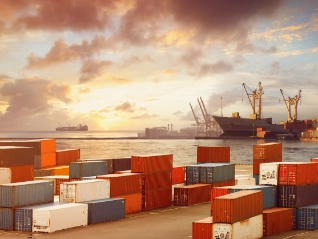
We recommend this information for you

Know more

Our blog posts
Filter by


The Federal Reserve's interest rate cut could have a significant impact on global...

AI is being heralded as a game-changer for international trade, but it poses challenges as well as opportunities

Atradius and Mondu team up to enable better payment solutions for B2B e-commerce

The US might impose 25% import tariffs on cars on national security grounds. What is the forecast impact and how is the auto industry...

The EU’s determination to press ahead with duties on Chinese EV imports highlights wider Western anxiety

Labour Party resounding victory in the UK general election promises a reset of the country’s relationship...
Viewing 7 out of 25
Filter by
Discover how the global economy is navigating trade tensions and uncertainty, with AI investment driving resilience and shaping growth prospects for 2026 and beyond


Industry growth slows as global trade applies the brakes

Can South Africa's GNU party overcome tensions and structural challenges to unlock GDP growth?

US tariffs, geopolitics and lower demand trigger a contraction of global automotive production in 2026

Tari...

Pharmaceuticals businesses throughout the world are reviewing their operational and...

Chemicals production growth projected to slow in 2025/2026 due to US tariffs
Viewing 7 out of 204
Having a credit management system that operates seamlessly with the rest of your business is...


In today’s trade climate, tariffs pose major challenges. This article explores how Incoterms help...

A high Days Sales Outstanding (DSO) can strain cash flow, heighten risk, and hinder growth. Proactively managing DSO through credit policies, prompt...

Bad debts are not just an accounting issue, but a threat to your financial health

Learn how managing your receivables with a strategic partnership can improve your financial governance and fuel your organisation's growth.

Partnering with a debt collection agency offers numerous benefits for businesses. Let's explore these advantages in details.

Calling a customer to ask for an overdue payment does require some skill. It can also feel uncomfortable to chase outstanding...
Viewing 7 out of 16


































